Indian monsoon beans | weathered beans Monsooned Malabar Malabar coffee beans
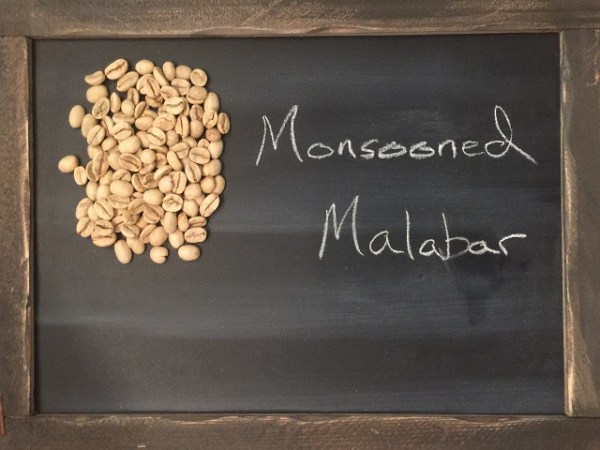
For professional baristas, please follow the coffee workshop (Wechat official account cafe_style)
| | about Malabar wind-stained beans |
Indian-style Malabar coffee has been favored by Europeans since the 17th century. This kind of wind-stained coffee is a new flavor created inadvertently. In the 17th and 18th centuries, India shipped coffee beans to Europe by sailboat, which took six months. The raw beans were placed on the bottom of the barn and absorbed the moisture and salty taste of the sea. The raw beans arrived in Europe and deteriorated, and the color changed from dark green to yellowish brown of rice. The acidity of the coffee almost disappeared, but it unexpectedly developed a strong nutty and shell flavor, which tasted full of tea, with a bit of Xuanmi tea flavor. Nordic people like this kind of golden alternative coffee very much. In 1869, the opening of the Suez Canal, coupled with the advent of steamships, shortened the sailing time from India to Europe. However, customers began to complain that Indian coffee was "stale", lost its charming color and flavor, and orders plummeted, and Indian exporters began to study the solution. It was only then that it was found that the time for coffee beans to be shipped to Europe had been shortened by more than half, and the original flavor had been lost before it was ripe. Some smart people think of the salty and wet environment of the Indian sea from late May to September along the coast of Malabar in southwestern India. After several experiments, it is sure enough to produce a tawny coffee without sour taste similar to that of the past, so it is called monsoon bean, or wind-soaked bean.
Indian coffee is originally thick, low and less sour, while wind-stained coffee beans are made from sun-cured beans. All the factories dealing with wind-stained coffee beans face to the west, facing the salty monsoon blowing from the southwest sea. The coffee beans are laid flat in the wind field, the windows are all open, and the wind stains to a certain extent, and then enter the bag, but because the beans will expand a lot in the process, so the coffee beans can not be filled too full, and the coffee bags should not be piled up too dense to avoid mildew and spoilage due to airtight, and from time to time to pour out the coffee beans and replace the sacks. To avoid the breeding of mold is a very time-consuming and labor-consuming project. The weathering period is about 12 to 16 weeks. After ripening, the weevil is fumigated to drive away the weevil. Finally, after manual screening of beans, pick out the failed beans that have not turned golden. After three to four months of wind treatment, the volume of Malaba raw beans expands by one to two times, resulting in a decrease in weight and density.
Indian style-stained Malabar coffee beans, although the beans are fat, they are soft beans that are strong and dry. Because the coffee beans have been exposed to the moist monsoon for a long time, not only the color of the beans has turned yellow and is known as the golden Malaba, the acidity of the coffee itself has also been greatly reduced, and the taste is very special. Wind-soaked beans are drunk individually, with rich aroma of wheat and tea. For hundreds of years, it has been widely used by European coffee manufacturers to prepare mixed coffee beans, which can increase the consistency and tea feel. Make a good espresso.

MANGALORE is the port of New Mangalore in India. It is located in the southwest of the Indian Peninsula, north of the mouth of the Gulpur River in Karnataka, northwest of Mengelor, facing the Arabian Sea. The northeast bank of the MANGALORE waters is a bulk cargo terminal, which is used for groceries and is accessible by railway. Southwesterly winds are often blowing in summer, averaging force 5-6, and are also affected by tropical storms. Tide is a half-moon type, exporting minerals, pepper, coffee, sandalwood, cashew nuts, tea and so on. The original port about 2 nautical miles from Xingang to the south is small in scale and is mainly used for coastal trade and fishery. The port of Mengeluer is to the south, about 10 kilometers away from the new port and 6 kilometers away from the old port.
| | treatment of wind-stained coffee |

In May and June every year, the monsoon phenomenon occurs in southwestern India. Wind-stained coffee needs to be made with sun-cured beans. Coffee farmers bask the beans flat in the wind-stained factory, which is about 12-20 cm thick, and place them for five days. Rake these coffee beans again and again, so that all the coffee beans are exposed to the extremely humid air at that time, and then put the beans loosely in a bag and pile them up. So that the monsoon can blow through the bag. The wind-stained plant faces to the west and welcomes the salty monsoon blowing from the southwest. Coffee beans are laid flat in the wind field, the windows are all open, and the monsoon humidity blowing from the Arabian coast in summer is very high, and the wind stains return to the bag to a certain extent, but the coffee beans should not be too full, and the coffee bags should not be piled too dense so as not to be airtight and moldy. There these bags are restocked once a week for a total of 7 weeks, until the coffee beans change color and taste. Also from time to time to pour out coffee beans to replace sacks to avoid breeding mold, which is quite time-consuming and labor-consuming.
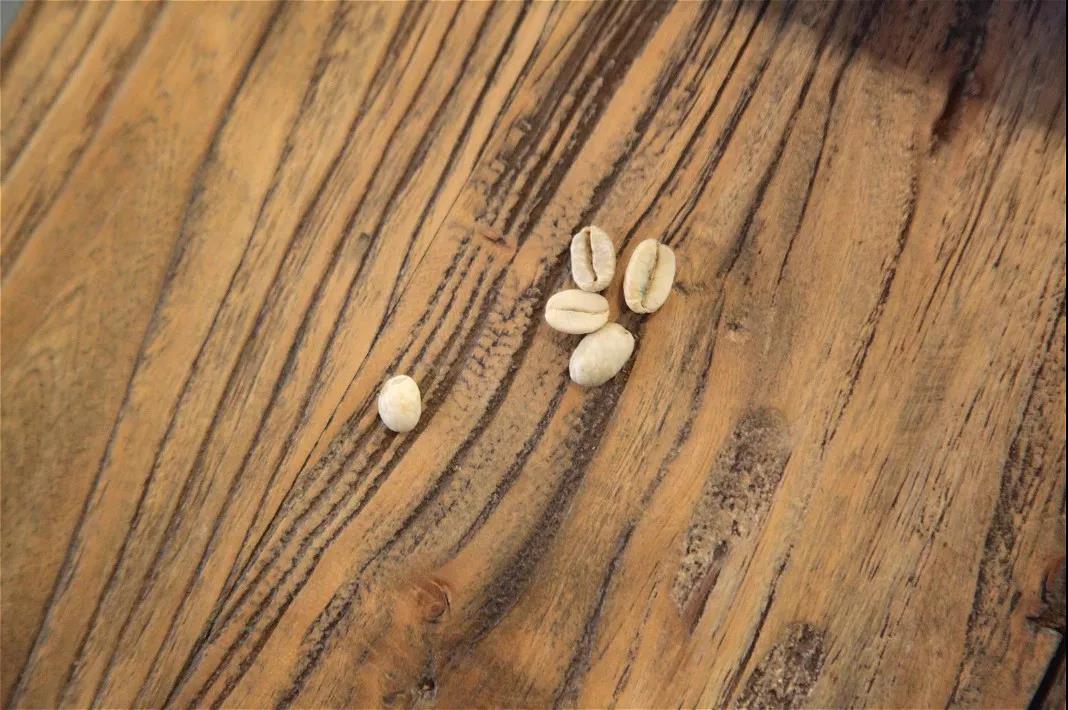
The weathering period is about 12 to 16 weeks, and after it is ripe, it has to be fumigated to drive out the weevil, and finally the beans are screened manually to pick out the failed beans that have not turned golden. Since June, after three to four months of wind stains, the volume of green coffee beans has doubled to double, the color has changed from green to golden yellow, the weight and density have decreased, the moisture content is about 13%, and the acidity of beans has also been reduced, resulting in significant changes in quality and quantity. Finally, the unwind-stained beans or other sundries and defective beans are screened again to remove those coffee beans that are not affected by the "monsoon", and then prepare for cup testing, grading, bagging, export, and so on. October to February of the following year is a good time to make "monsoon" coffee.
| Coffee type
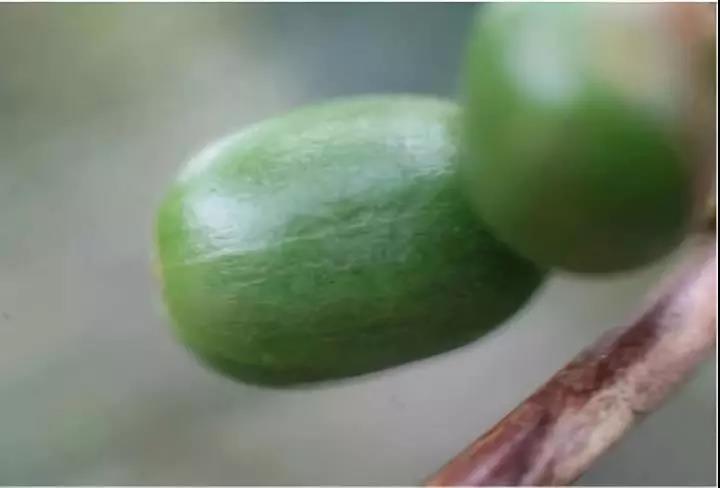
Kent:
A hybrid of Tibika, S288 and Typica, found in the Kent Cafe Garden in Mysore, India in 1911, has high yield and resistance to rust. But did not get good results in the cup test. The aroma of coffee is thicker than bourbon.
S795
Jember, an Indian botanist, in turn used the first generation of S288 and iron pickup hybrid Kent,Kent and the second generation of S288 to form what is now S795. 1955 the Indonesian Coffee and Cocoa Institute (ICCRI) named Jember is widely grown in India and Indonesia, Yemen and Ethiopia. There was some resistance to coffee leaf rust, but the resistance decreased with time. The flavor is close to Arabica and has a wild flavor.
Catimor
In 1959, the Portuguese mixed Brazilian Kaddura with Timo and bred the second generation of Cartimo, which has strong disease resistance and yield capacity. But the flavor is also poor, and it is an important variety of commercial beans at present. In recent years, botanists from all over the world have turned to the interaction between Arabica and Katimodo in an attempt to reduce the pedigree of Luodou in order to improve the bad reviews of the Katimo Cup.
:
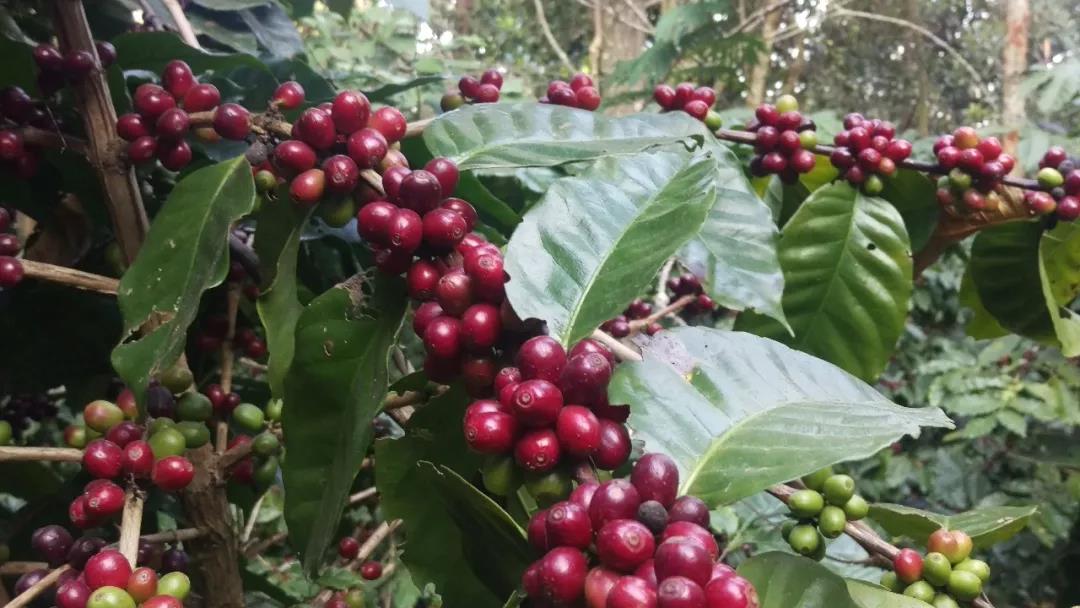
| Qianjie Coffee teaches you how to bake Malaba Coffee.
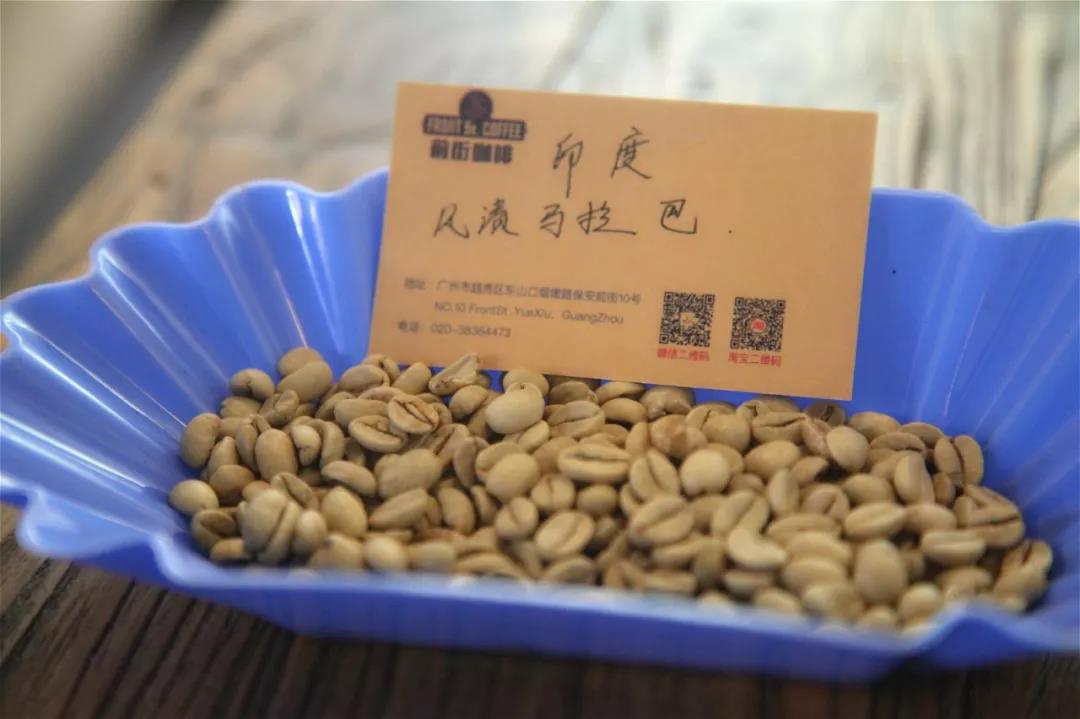
This coffee belongs to the general density of beans, roasting medium firepower steadily climb, turn yellow point in about 4 minutes 50 seconds, and then reduce firepower to open the throttle into the Mena reaction, when an explosion, open the throttle, maintain firepower, the temperature is about 184.4 ℃, 2 minutes and 30 seconds after an explosion.

Roaster Yangjia 600g semi-direct fire
The furnace temperature is preheated to 200 degrees Celsius, the throttle is opened at 3jing30s and fired, the firepower is adjusted to 160, the temperature recovery point is 1: 25 ", the firepower is maintained, 4: 50" turns yellow, the smell of grass disappears, enters the dehydration stage, the firepower is lowered to 140, the throttle is opened to 4, and the firepower is reduced to 110 again at 168 degrees.

After 8 minutes of dehydration, the bean surface appears wrinkled and black markings, and the smell of toast changes to coffee, which is a prelude to an explosion, when the firepower remains the same, the throttle opens to 5, and listen to the sound of an explosion. When it starts to explode at 8: 55 ", all the throttle doors are open." The development time after an explosion is 2 minutes and 30 seconds to 197.8 ℃.
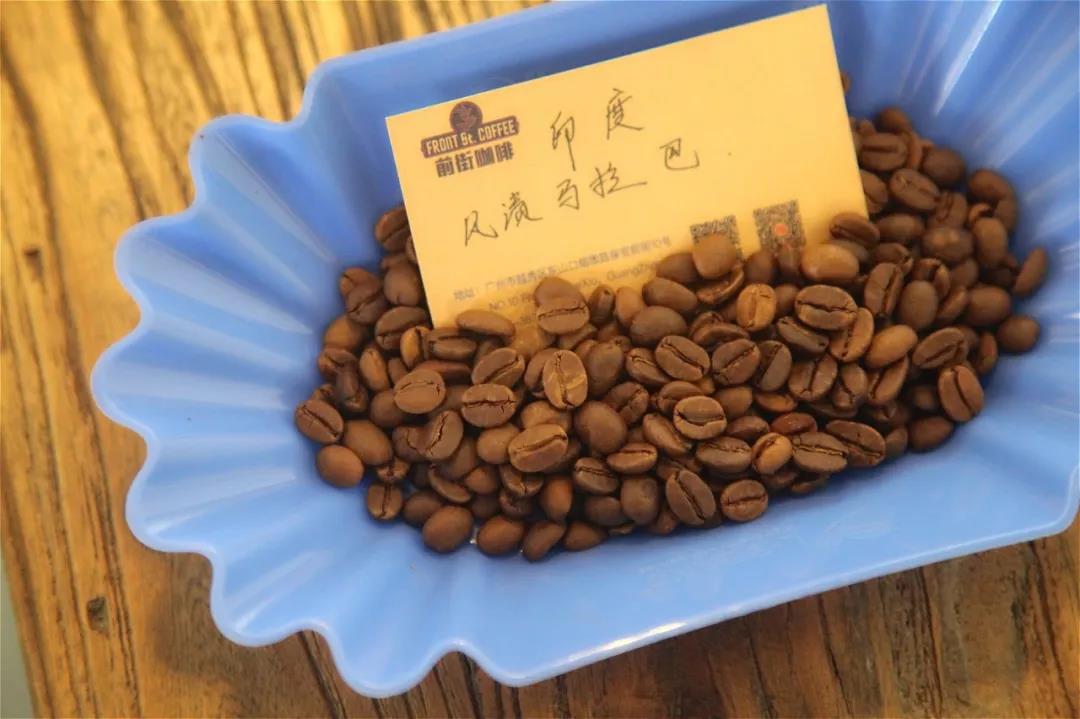
Indian style-stained Malabar coffee beans, although the beans are fat, they are soft beans that are strong and dry. Because the coffee beans have been exposed to the moist monsoon for a long time, the acidity of the coffee itself has been greatly reduced and the taste is very special. Rich aromas of caramel, raisins and herbs, with a raspberry finish and a taste of black rice tea.
| | Qianjie coffee is recommended for brewing by hand. |
Degree of grinding: 4 (Japan Fuji R440) (47% of Chinese standard No. 20 screen pass rate)
Water temperature: 83 °C
Kono filter cup, 17 grams of powder, water temperature 83 degrees, grinding 4, water powder ratio close to 1:13
Technique: steaming with 30 grams of water for 30 seconds
Segment: water injection to 120g cut off, slightly larger water injection to 221g
The total extraction time is 1:50-2 minutes.
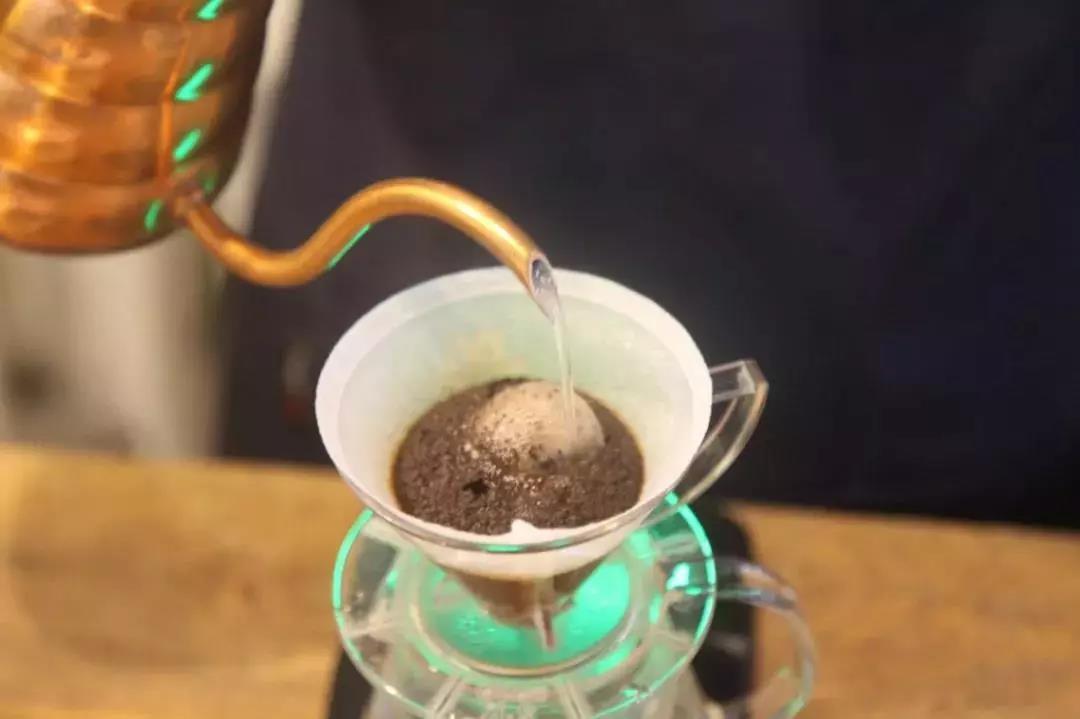
Other suggestions for trickling extraction:
Normal pressure: recommended 4 degree of grinding, water temperature 83 °C
Philharmonic pressure: recommended 4 degree of grinding, water temperature 83 °C
Important Notice :
前街咖啡 FrontStreet Coffee has moved to new addredd:
FrontStreet Coffee Address: 315,Donghua East Road,GuangZhou
Tel:020 38364473
- Prev
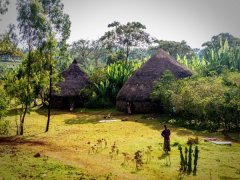
Introduction of Anasora Coffee Manor, a single private estate in the Guji producing area
For the exchange of professional baristas, please follow the coffee workshop (Wechat official account cafe_style) about Anasora Coffee Manor introduction Anasora this coffee comes from Guji's single private estate, established in 2013, the estate is located in Anasora village, Guji district, southeast of oromia, planting height at 1900 2350 meters above sea level, excellent geographical conditions, plus
- Next
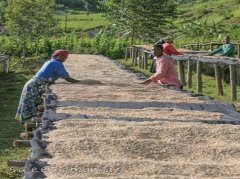
Cocatu Cooperative of Rulindo producing area in Rwanda introduces the flavor description of Bourbon.
Professional baristas exchange please follow the coffee workshop (Wechat official account cafe_style) flavor introduction black cherry flavor, delicate floral, clove spices. Add hot water, raisins, figs and other smells. When the coffee liquid reaches the palatable temperature, you will feel the smell of scented tea, such as chamomile tea, sweetened with red honey. As the coffee cools, cherry, cola and brown sugar flavors
Related
- Detailed explanation of Jadeite planting Land in Panamanian Jadeite Manor introduction to the grading system of Jadeite competitive bidding, Red bid, Green bid and Rose Summer
- Story of Coffee planting in Brenka region of Costa Rica Stonehenge Manor anaerobic heavy honey treatment of flavor mouth
- What's on the barrel of Blue Mountain Coffee beans?
- Can American coffee also pull flowers? How to use hot American style to pull out a good-looking pattern?
- Can you make a cold extract with coffee beans? What is the right proportion for cold-extracted coffee formula?
- Indonesian PWN Gold Mandrine Coffee Origin Features Flavor How to Chong? Mandolin coffee is American.
- A brief introduction to the flavor characteristics of Brazilian yellow bourbon coffee beans
- What is the effect of different water quality on the flavor of cold-extracted coffee? What kind of water is best for brewing coffee?
- Why do you think of Rose Summer whenever you mention Panamanian coffee?
- Introduction to the characteristics of authentic blue mountain coffee bean producing areas? What is the CIB Coffee Authority in Jamaica?

